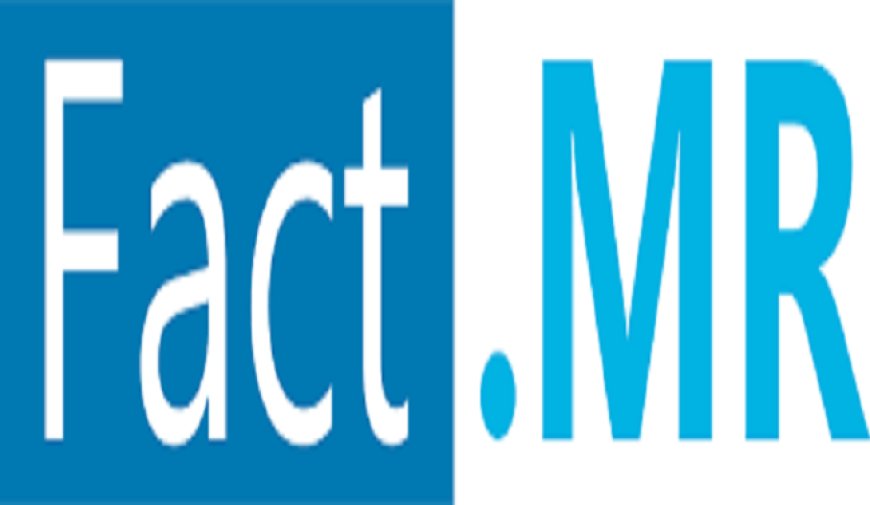Wind Energy Sector Drives Adoption of Lightweight Fiberglass Fabrics
The global fiberglass fabric market is valued at US$ 10.27 billion and is expected to grow at a robust CAGR of 7.2%, reaching US$ 20.69 billion by 2032.

The global fiberglass fabric market is valued at US$ 10.27 billion and is expected to grow at a robust CAGR of 7.2%, reaching US$ 20.69 billion by 2032.
Fiberglass fabric is a versatile material made from woven glass fibers, widely known for its strength, durability, and resistance to heat, fire, and chemicals. It is used in various industries, including automotive, aerospace, construction, and marine, due to its excellent mechanical properties and ability to withstand extreme environments. The fabric is created by weaving fine strands of glass into different forms, such as mats, roving, and cloths, which can then be coated or impregnated with resins to enhance its performance. Its adaptability in different applications, coupled with the growing demand for sustainable and high-performance materials, has fueled the growth of the fiberglass fabric market in recent years. The lightweight yet strong properties of fiberglass fabric make it a preferred choice for manufacturers looking to reduce weight without compromising strength, particularly in industries like automotive and aerospace.
Want Full Report? Enquire Here-https://www.factmr.com/report/878/fiberglass-fabric-market
Market Insights
The fiberglass fabric market is seeing significant demand across various sectors, driven by its unique combination of properties such as high tensile strength, low thermal expansion, and resistance to moisture. In the construction industry, fiberglass fabric is used for reinforcement in concrete and in the manufacture of insulating materials. The automotive sector benefits from fiberglass fabric’s light weight and resistance to high temperatures, leading to its use in car body parts, engine components, and heat shields. In the aerospace industry, it is utilized for the manufacturing of lightweight aircraft components and interior parts due to its excellent strength-to-weight ratio. Moreover, fiberglass fabric is finding increasing use in wind turbine blades, boat hulls, and other marine applications, as the material’s corrosion resistance makes it suitable for harsh environments. These diverse uses have contributed to a steady rise in demand for fiberglass fabric, which is expected to continue as technological advancements make it more cost-effective and accessible.
Future Outlook
The future outlook for the fiberglass fabric market is optimistic, with sustained growth expected across several industries. As the demand for lightweight, durable materials increases, particularly in the automotive and aerospace sectors, the need for fiberglass fabric will continue to grow. In the automotive industry, manufacturers are increasingly focusing on reducing the weight of vehicles to improve fuel efficiency and meet stricter environmental regulations. This has led to a higher demand for composite materials, such as fiberglass fabric, which are ideal for reducing vehicle weight while maintaining strength and safety. Additionally, the growing emphasis on renewable energy, particularly wind power, is likely to create further demand for fiberglass fabric used in the production of wind turbine blades. In construction, the push for more sustainable building materials will likely increase the use of fiberglass fabric as a reinforcement material in eco-friendly construction projects. As these industries continue to evolve, the fiberglass fabric market is poised for long-term growth.
List of Key Companies Profiled in The Report
- Chomarat Textile Industries
- Gurit
- Saint-Gobain Performance Plastics
- Asahi Kasei Corporation
- Porcher Industries
- Saertex GmbH & Co. Kg
- Others
Recent Industry News
Recent developments in the fiberglass fabric market reflect ongoing advancements in material technology and applications. Companies are focusing on developing new types of fiberglass fabric that offer improved performance characteristics, such as enhanced durability, higher resistance to extreme temperatures, and increased tensile strength. In the automotive industry, leading manufacturers are incorporating fiberglass fabric into the production of lighter, more fuel-efficient vehicles, with some automakers even experimenting with entirely composite car bodies made from fiberglass. The aerospace industry has also seen a surge in the adoption of fiberglass composites in aircraft production, particularly for lightweight interior components. In the wind energy sector, advancements in fiberglass fabric have led to the production of larger, more efficient turbine blades, which are critical to meeting global renewable energy goals. Furthermore, new applications for fiberglass fabric in the construction industry are emerging, with architects and engineers increasingly recognizing its value in creating sustainable, durable buildings and infrastructure.
Notable Developments
Notable developments in the fiberglass fabric market include the growing use of advanced composite materials in a wide range of industries. In the automotive sector, several manufacturers have introduced vehicles with fiberglass composite components designed to reduce weight and improve fuel efficiency. The aerospace industry continues to innovate with fiberglass fabric for both interior and exterior aircraft parts, taking advantage of the material’s lightweight and heat-resistant properties. In wind energy, there have been significant improvements in the production of larger, stronger fiberglass-reinforced blades, enabling wind turbines to generate more power and operate more efficiently. In construction, the use of fiberglass fabric as reinforcement for concrete and insulation material has gained momentum, driven by the increasing demand for sustainable and durable building materials. These developments are expected to continue as industries strive to meet environmental, performance, and cost-efficiency goals, making fiberglass fabric a key material in the future of manufacturing and construction.
Competitive Landscape
The fiberglass fabric market is highly fragmented with numerous producers and service providers. To stay competitive, manufacturers focus on innovation and building strong distribution networks, responding to the growing demand for premium, lightweight, and strong fabrics. Large companies often establish long-term supply agreements to ensure raw material availability and consistency. Owens Corning strengthened its market position by acquiring Ahlstrom's glass non-woven and fabric operations in January 2016. In June 2018, Owens Corning partnered with Chongqing Polycomp International Corp. (CPIC) to jointly invest in technology and develop a new facility in China for high-modulus glass fiber products.












